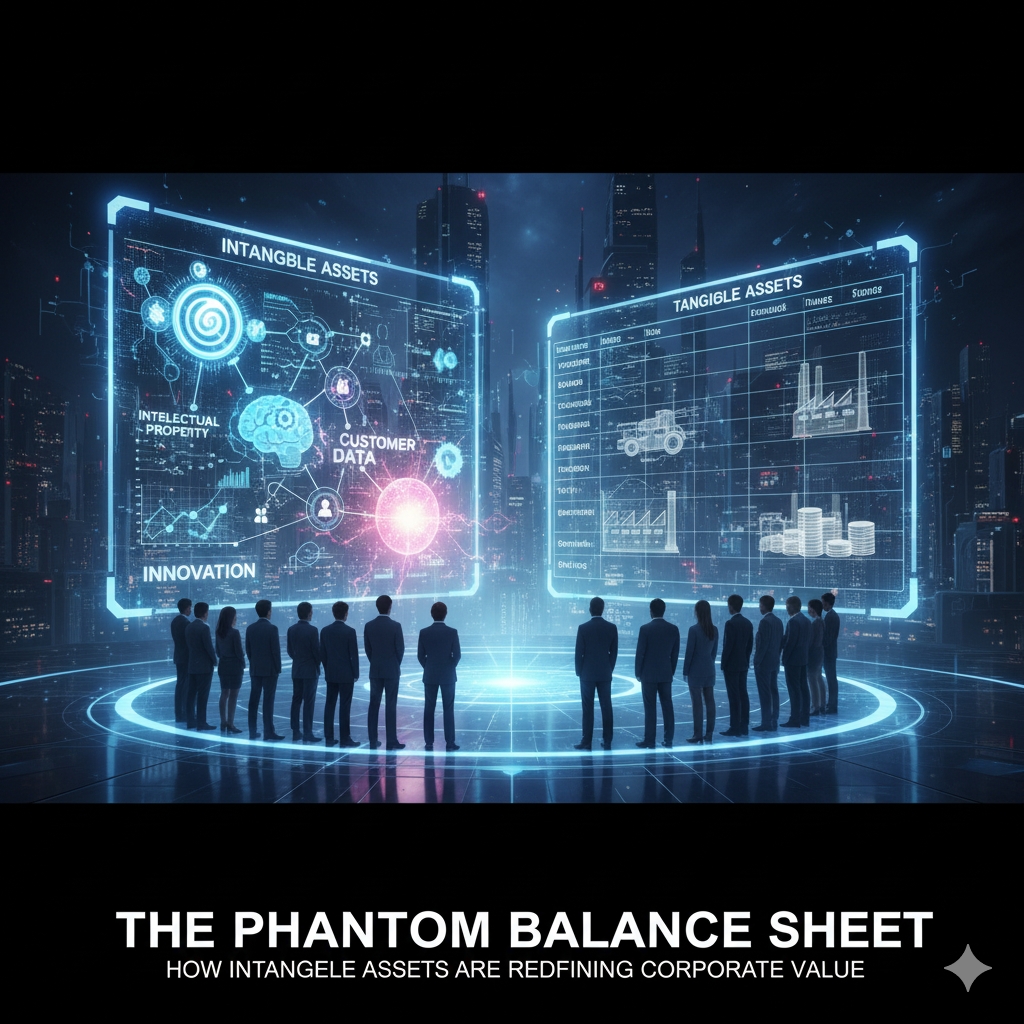For decades, the public markets were the pinnacle of corporate ambition—the place where companies like Apple and Microsoft achieved global stature and delivered generational wealth to retail investors. That era is ending. A fundamental power shift is underway: the most valuable companies, the most innovative technologies, and the highest-growth trajectories are increasingly staying private for longer, or never going public at all. We are witnessing a Great Migration of Value from the transparent, liquid public markets to the opaque, exclusive world of private capital. This is creating a two-tiered investment landscape, and the “dumb money” in public markets is being systematically starved of the best growth stories.
The Unicorn Nursery: Why Companies Are Staying Private
The decision to delay an IPO is no longer a failure of readiness; it is a strategic choice driven by a perfect storm of market forces.
The Ocean of Private Capital: An unprecedented amount of capital is sloshing around in private equity, venture capital, and sovereign wealth funds. Assets under management in private markets have soared past $10 trillion. A company like SpaceX or Stripe can raise billions of dollars in a single private round, valuations once only achievable through a public listing. This removes the primary incentive for an IPO: access to capital.
Freedom from Quarterly Myopia: Public company CEOs are increasingly vocal about the tyranny of quarterly earnings reports. The relentless pressure to meet Wall Street’s short-term expectations can force companies to sacrifice long-term R&D, bold strategic bets, and sustainable growth initiatives. In the private world, founders and VCs can execute a 10-year vision without explaining themselves to the market every 90 days.
Regulatory and Scrutiny Avoidance: The compliance burden of being a public company—Sarbanes-Oxley, SEC disclosures, proxy fights—is immense and expensive. Staying private allows a company to operate with greater secrecy, avoiding the intense public and media scrutiny that can follow every misstep.
The SPAC Hangover and IPO Chill: The failed promise of the SPAC (Special Purpose Acquisition Company) boom and high-profile IPO flops (like WeWork) have cast a pall over the public debut process. Many companies that went public prematurely were brutally revalued by the efficient, and often ruthless, public markets, serving as a cautionary tale for others.
The Mechanics of the Drain: How Value is Siphoned Away
The migration of value isn’t passive; it’s an active process engineered by the private market ecosystem.
The “Last Mile” Problem for Public Investors: By the time a company like Rivian or Snowflake finally goes public, the vast majority of its explosive, venture-funded growth is already in the past. Public investors are buying the “last mile” of the growth story, often at a premium valuation, while the early, high-risk, high-reward stages were captured exclusively by private VCs and accredited investors.
Secondary Markets and Tender Offers: A sophisticated secondary market has emerged, allowing early employees and investors to cash out some of their shares long before an IPO. Furthermore, funds like Altimeter and T. Rowe Price run massive tender offers, buying shares from employees of pre-IPO unicorns. This provides liquidity that further reduces the pressure to go public, all while keeping the ownership circle tightly closed.
Private Equity as a Vacuum: Publicly-listed companies are increasingly being acquired and taken private by PE firms. Once private, these companies are stripped of their public reporting requirements, restructured, loaded with debt, and often later re-listed at a much higher valuation after the easy efficiencies have been captured. The public investor gets the volatile, indebted re-listing, not the steady, operational turnaround.
The Consequences: A Thinning Public Market and the Illiquidity Premium
This structural shift has profound implications for the health of the public markets and the prospects for the average investor.
The Thinning of the S&P 500: While the index hits new highs, it is becoming a museum of established champions rather than a nursery for future ones. The number of publicly listed companies in the U.S. has been cut in half since the 1990s. This concentration risk means the entire market’s health is tied to an ever-smaller group of mega-cap companies.
The “Illiquidity Premium” is Real: Historically, investors demanded a premium for holding illiquid private assets. That equation has flipped. The highest returns are now being captured in the private markets, creating a negative liquidity premium for public stocks. The best assets are so valuable that their owners don’t need the liquidity public markets provide, and they are hoarding the associated returns.
The Democratization Dilemma: The narrative of “democratizing investing” is facing a harsh reality. While apps like Robinhood have made trading accessible, they haven’t made access to the best assets equitable. The most significant wealth creation of the last decade occurred in private startups, a game still largely reserved for the wealthy and well-connected. The retail public is left to trade the already-mature leftovers.
The Investor’s Dilemma: How to Participate in the Private Boom
For the average investor, gaining exposure to this high-growth segment of the economy is challenging but not impossible. It requires a new playbook that moves beyond traditional stock-picking.
The Public Proxy Strategy: Invest in public companies that have a vested interest in the success of the private ecosystem. This includes:
Private Equity Firms: Publicly traded PE firms like Blackstone, KKR, and Apollo Global Management. Their stock performance is directly tied to the fees and carried interest they earn from managing vast pools of private capital.
Venture-Dependent Tech Giants: Companies like Google (Alphabet), Apple, and Microsoft are themselves massive corporate venture arms. They acquire and invest in dozens of private startups, effectively using their balance sheets as a publicly-traded VC fund.
The “Feeder” Fund Route: For accredited investors, a growing number of platforms like AngelList and iCapital Network provide access to curated portfolios of late-stage private companies through feeder funds. These are still high-risk, illiquid investments, but they offer a structured path to the asset class.
Special Purpose Acquisition Companies (SPACs): While the SPAC boom busted, they remain a mechanism for bringing private companies public. The key is extreme due diligence, focusing on SPACs with reputable, experienced sponsors and targeting companies that are at a genuine inflection point, not just cashing out early investors.
Crowdfunding Platforms: For smaller, retail investors, regulated crowdfunding platforms (under regulations like Regulation CF) allow for direct investment in very early-stage startups. This is the riskiest end of the spectrum, akin to buying a lottery ticket, but it is the most direct form of access.
Case Study: The Airbnb Model – A Textbook Example
Airbnb is a perfect case study. Founded in 2008, it didn’t go public until December 2020. In those 12 years, it raised over $6 billion in private funding, grew into a global behemoth, and navigated its business model to maturity. By the time it IPO’d, its core story of disrupting hospitality was well understood, its valuation was largely set, and its most explosive growth phase was over. Public investors bought a fantastic, established company, but they missed the 100x journey that its early private backers enjoyed.
Strategic Outlook: The Future is a Hybrid Model
The trend of staying private longer is irreversible. However, the future will likely see the rise of hybrid models that attempt to bridge the gap.
Direct Listings: Companies like Spotify and Slack have used direct listings to go public without raising new capital, avoiding the traditional IPO roadshow and its associated pressures. This allows them to provide liquidity to existing shareholders while maintaining more control.
Long-Term Stock Exchanges: New exchanges are being proposed that would reward companies for focusing on long-term metrics. While still nascent, this is a direct response to the “quarterly myopia” complaint.
Increased Retail Access to Private Markets: Regulatory changes and financial technology will inevitably open up more avenues for non-accredited investors to gain exposure to private assets, likely through new fund structures that bundle and securitize them, albeit with higher fees and complexity.
Conclusion: The End of the Public Market Golden Age
The golden age of the public market, where the average investor could easily buy a piece of the next great American growth story on its way up, is fading. The public markets are increasingly becoming a place for capital preservation and income, while the private markets are the domain of capital appreciation and explosive growth.
For investors, this demands a strategic reckoning. Chasing momentum in public small-caps is a poor substitute for accessing genuine venture-scale returns. The new imperative is to either find creative ways to gain exposure to the private capital ecosystem or to radically adjust return expectations from a purely public portfolio. The value hasn’t disappeared, but it has become harder to find. It is now hiding in plain sight, locked away in the private funds and boardrooms where the real growth is being cultivated.












